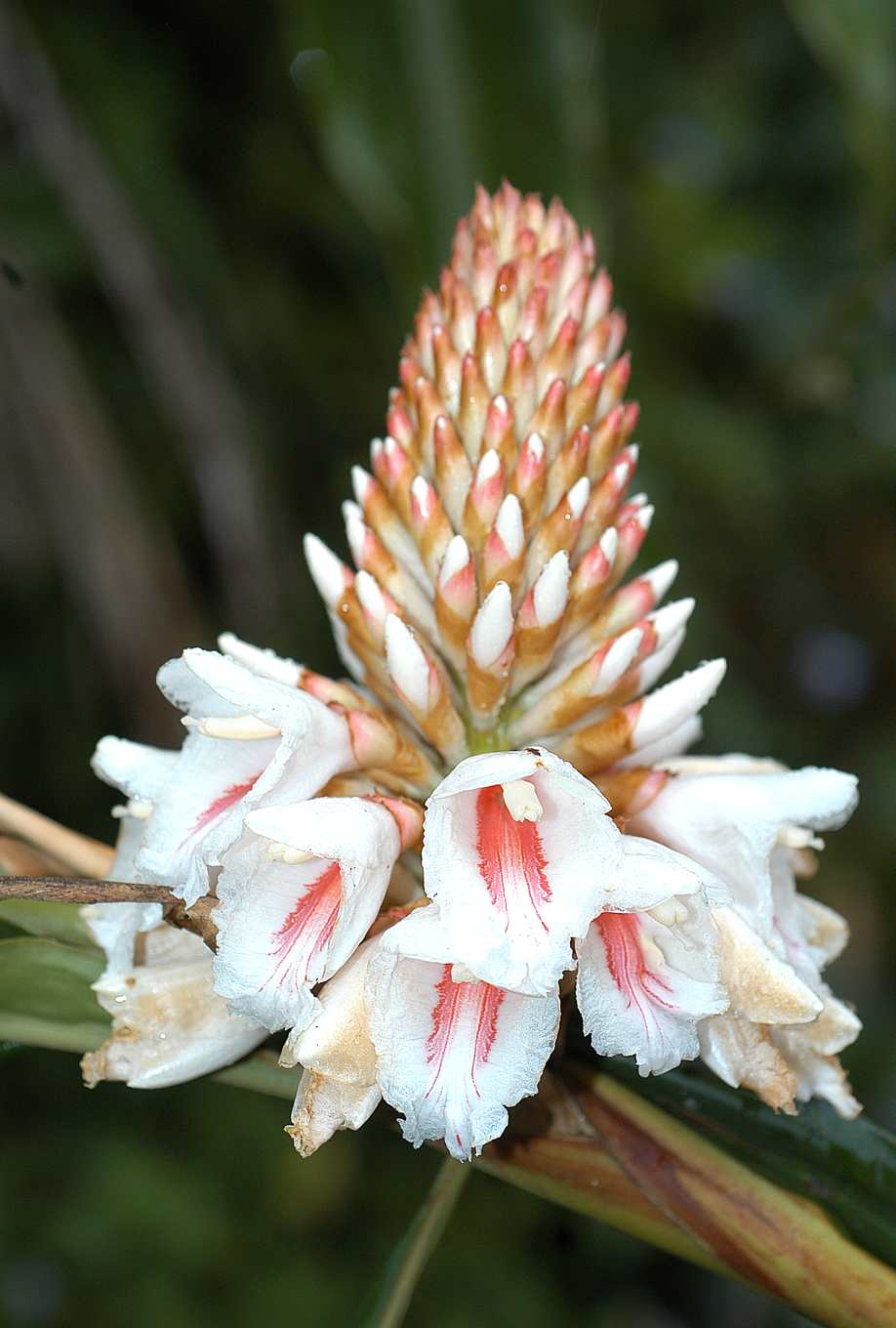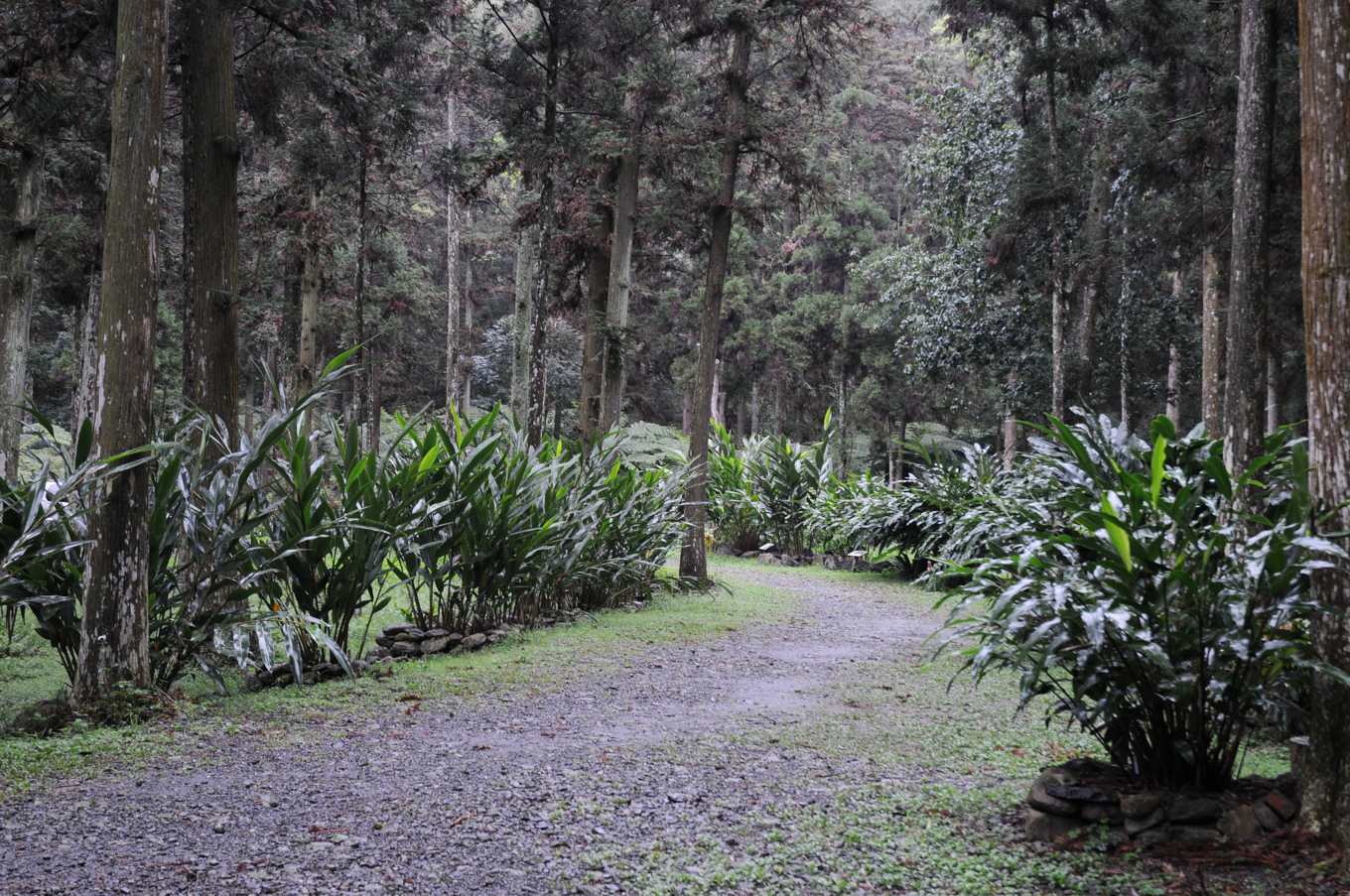The next cancer star, Yuetao! Non-toxic but can inhibit cancer cells, antidepressant analgesia, antibacterial sweat absorption can also whitening!
337 shared
Some weeds looked ordinary, but they were full of treasures, such as moon peaches. The moon peach, which can be seen everywhere in Taiwan's rural mountains, has a long history as a folk plant. It has a wide range of uses, from cooking soup dumplings to weaving straw mats. In recent years, domestic research has found that the compounds contained in the moon peach have multiple effects such as anti-inflammatory, antibacterial, blood lipid lowering, antioxidant, antidepressant, anti-anxiety, etc., and even more eye-catching is anti-cancer and anti-cancer effects, which can effectively inhibit cancer cell metastasis.
"Moon peach" refers to the ginger family month peach plants, with lush clusters of wide and long leaves, at first glance unrestrained grass, but when flowering, a string of pink flowers delicate, elegant and pleasant. Moon peaches can be seen from the plains to altitudes of 2,000 meters, and all ethnic groups in Taiwan use them.
"Many people think that they know about moon peaches, but in fact, they don't know much about them." Zeng Yan, professor of forestry department of Zhongxing University, said. The academic team he cooperated with Professor Wang Shengyang has carried out systematic research on moon peach for many years and found that moon peach contains rich active substances and is a health care medicinal plant with infinite potential.
.jpg)
.jpg)
Zeng Yanxue, professor of forestry at Chung Hsing University, and the moon peach he planted on campus (Photo/Cai Jiashan) The next anti-cancer star, the moon peach, is nontoxic but can inhibit cancer cells
Zeng Yanxue, known as the "Moon Peach Daren," is responsible for classifying and identifying and collecting varieties of moon peaches, confirming that there are 18 species of moon peaches in Taiwan, 12 of which are endemic to Taiwan, and the proportion of endemic species is quite high. Wang Shengyang was responsible for analyzing the components of various varieties of peach and found more than a dozen phenolic compounds, including a variety of flavonoids and stilbenes.
The 18 species of moon peach in Taiwan are: Quchi moon peach, Jiaobanshan moon peach, Pulai moon peach, Alishan moon peach, Shimada moon peach, Hengchun moon peach, Chuanshang moon peach, Tunlu moon peach, Nantou moon peach, Ou moon peach, Yilan moon peach and Wulai moon peach. These 12 species are endemic to Taiwan. There are 6 kinds of peach, such as Luzon, Taiwan, Mountain, Gaoliang, Japan and Moon. The last item is "moon peach", which is the most widely distributed moon peach in China.
In 2005, Wang Shengyang discovered that extracts from a unique species of Pleiothrix can prolong sleep in mice and have antidepressant, anti-anxiety and analgesic activities. One of the ingredients, kavalactone, has a calming effect."That's why I'm so interested in moon peaches. This ingredient was originally only found in the pepper family," Wang says.


Prey's Moon Peach (Photo Provided/Zeng Yanxue)
Another endemic species, Nantou Yuetao, contains a stilbene compound in its underground stem that inhibits lung cancer cell migration, according to a recent study published in an international journal by Wang Shengyang's team. A recent study by Professor Wang Hui-chun of the Institute of Natural Medicine at Kaohsiung Medical University also found that Nantou moon peach extract can inhibit the metastasis of breast cancer cells, which has the potential to develop new anticancer drugs.
Wang Shengyang initially began to study moon peach under Zeng Yanxue's suggestion, the more interested he became,"I think the reason why moon peach can continue to be done is, like paclitaxel can fight cancer, but it is toxic things, but moon peach is not toxic cells, like stilbene, is similar to wine veratryl alcohol ingredients, are non-toxic."


Nantou Moon Peach (Photo courtesy/Zeng Yanxue) Intimate and versatile folk plants
The moon peach, which has high hopes for new drug development, is actually closely related to the lives of ordinary Taiwanese. People have long noticed that this fragrant ginger plant belongs to the same family as ginger mother, turmeric and wild ginger flower, and has uses from roots and leaves to flowers and seeds.
Not only can the leaves be used to wrap rice dumplings to add flavor, but the roots can also be eaten. Tseng explains that the underground stem of the Kao Liang moon peach, or Nanjiang, is the material used by Taiwanese to brew plums, and the southern flavor of tomato ginger sauce is also made of Nanjiang. Wu Hsueh-yueh, a potherb expert, also writes in her book that the Ami people would boil or steam the tender stems of the moon peach, and fry the flowers to eat. In the early days, elders would give the moon peach heart to children to eat as an anti-ascarid medicine.


Moon peach fruits are red after ripening (Photo courtesy/Zeng Yanxue) Moon peach naturally absorbs sweat and antibacterial, and can be woven into straw mats to hold baskets
Moon peach has a long medicinal history. Compendium of Materia Medica records: "Shrinkage sand, mainly for cold diarrhea and abdominal pain, can warm liver and kidney, harmonize qi, treat spleen and stomach qi stagnation, nourish lung and spleen, nourish stomach and kidney, and regulate qi." This "shrinking sand" is the seed of the moon peach. The famous Japanese patent medicine "Qiao Hu Ren Dan", a grain of silver beads, the main raw material is also from the moon peach seeds.
The moon peach is also indispensable in the life customs and daily life of the indigenous people. Long and tough leaf sheath, dried can be woven into a straw mat or basket, can also directly replace the rope. The natural material and ingredients of moon peach can absorb sweat and bacteria, and it is best to make it into a straw mat. The Paiwan and Rukai wedding gifts must have a moon peach straw mat, while the Wu people wrap their deceased relatives with a moon peach straw mat.


Aborigines collect peach leaf sheaths for weaving after exposure to sunlight (Photo courtesy/Zeng Yanxue)


Moon Peach Basket (Photo Provided/Zeng Yanxue) Discovered New Species of Moon Peach, Planting Moon Peach People in "Moon Peach Lane"
Moon peach is not only practical, beautiful flowers also have ornamental value. Tang Dynasty poet Du Mu poem "more than thirteen, cardamom tip early February", later generations to "cardamom youth" to describe the girl, this "cardamom" refers to the moon peach blossom
Flower is an important index for classification and identification of peach. Tseng Yen-hsueh, director of the experimental forest management department at Chung Hsing University, collected 18 species of Taiwan's wild moon peach and planted them in Huisun Forest Farm, called "Moon Peach Lane," hoping that the public would understand and appreciate the beauty of the diversity of moon peach.
Tseng explains that the distribution of moon peaches is regional. For example, European and Pulai moon peaches only appear in the east, Nantou and Alishan moon peaches only appear in the middle, Hengchun moon peaches only appear in Hengchun Peninsula, and Luzon moon peaches only appear in Green Island and Orchid Island.
Zeng Yanxue talked about the moon peach as a number of treasures,"In addition to the general moon peach flowers are drooping, other moon peach flowers are standing upright, the most special is Ou moon peach, inflorescences droop first, then go up." The new species was discovered by him and Wang Chih-chiang, professor of forestry at Pingtung University of Science and Technology. It was located in Chihpen, Taitung. It was named after Ou Chen-hsiung, their mentor, and has special significance.

- Prev

Warm heart in autumn and winter to the four hot springs in Taichung
Autumn is to soak in hot springs in Taichung! In conjunction with the subsidy for CITS Autumn and Winter Tour, Taichung City Tourism Bureau and hot spring operators jointly launched a discount plan, including a discount for staying in a hot spring hotel or an additional afternoon tea, inviting people to soak in Taichung.
- Next

YouBike, Vice Secretary of the Ministry of Economic Affairs, led a roaming tour of Taichung food market.
The market micro travel promotion campaign launched by the Ministry of Economic Affairs came to Taichung City. Wang Meihua, Vice Secretary of the Ministry of Economic Affairs, led a number of tourists to roam the old city of Taichung on YouBike, feeling the century-old popularity of the secondary market and tasting Wuxingle's fleshy taste.
Related
- A course of planting techniques and methods on how to grow carrots
- How to plant the latest tulips?
- Is it better to pick tea in the morning or in the afternoon? When is the best time for tea to be picked? what is the third or fifth tea?
- Launch Yuanxiao Happy combination Haocha + Tea Yuan healthy Taste
- Penghu Tourism "Fireworks 20 Parade with You"
- 2022 West Lake Happiness holds "Digital Revitalization Voucher" and draws iphone13 and laptop.
- Banqiao Fuzhou social houses are designed to change start-up combined with police elimination to create a safe and livable environment
- The convenient measure of "mechanical weeding" in Xinbei has been abused and the Agriculture Bureau has imposed heavy penalties on the illegal land consolidation.
- Changgeng University Joins Hands with Four Memory Factories to Rescue Memory Talent Shortage
- The list of Taiwan's top 100 MVP managers is listed by the Director-General of the Farmers' Association of Sanxia District.

